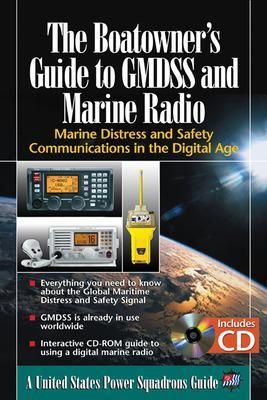
The Boatowner's Guide to GMDSS and Marine Radio
International Marine Publishing Co (Verlag)
978-0-07-146318-8 (ISBN)
- Titel ist leider vergriffen;
keine Neuauflage - Artikel merken
The new digital Global Maritime Distress and Safety System(GMDSS) is revolutionizing emergency communications and international search-and-rescue at sea. Clearly and concisely, this one-of-a-kind guide presents what you should know about using digital marine radios for emergency assistance and enhanced safety.
McGraw-Hill authors represent the leading experts in their fields and are dedicated to improving the lives, careers, and interests of readers worldwide
ForewordPrefaceChapter 1: What is GMDSS?Communications at Sea: A Brief HistoryEvolution of GMDSS What Makes GMDSS a Superior System?Sea AreasChoosing the Correct BandWhen Will GMDSS be Activated?Chapter 2: VHF-DSC OutfittingFeatures of VHF-DSCChoosing a VHF-DSC RadioRegistering Your RadioThe Ship Station LicenseInstalling a VHF-DSC RadioTesting DSC CapabilitiesChapter 3: VHF-DSC Use – Routine CommunicationsMaritime Radiotelephone FrequenciesWatch RequirementsCalling FrequenciesSelecting the Working ChannelProcedures for Calling—VoiceProcedures for Calling—DSCProcedures for Fleet Calling—DSCChapter 4: VHF-DSC Use—Emergency ProceduresA Digital Distress Broadcast is the Most Efficient Way to Call for AssistanceThe Undesignated Distress AlertThe Designated Distress AlertAcknowledging a Distress AlertRelaying a Distress CallCanceling a Valid Distress AlertCanceling a False Distress AlertMaintaining Radio SilenceDirection FindingPrudenceClosure of a Distress SituationUrgency and Safety AlertsChapter 5: Port Operations – Voice, Digital and AIS SystemsCoping with Crowded Harbor TrafficChannel 13Channels 06 and 22AThe Automatic Identification SystemChapter 6: MF/HF Services for Sea Areas A2 and A3Boating Further OffshoreCalling and Distress FrequenciesDistress and Calling ProceduresChapter 7: Inmarsat, NAVTEX, SafetyNET and Amver for Sea Area A3Inmarsat NetworkNAVTEXSafetyNETAmverChapter 8: EPIRBs, SARTs and Other Useful ToolsThe Emergency Position-indicating Radio Beacon (EPIRB)Personal Locator and Man Overboard BeaconsSearch and Rescue TranspondersAppendix 1. VHF Radiotelephone Frequencies – United StatesAppendix 2. VHF Radiotelephone Frequencies—CanadaAppendix 3. VHF Radiotelephone Frequencies—InternationalAppendix 4. MF Single-sideband Marine Radiotelephone FrequenciesAppendix 5. HF Single-sideband Marine Radiotelephone ChannelsAppendix 6. Emergency Radio ProceduresAppendix 7. Mayday Template GlossaryReferencesIndexAbout the US Power SquadronsCD-ROM Instructions
| Erscheint lt. Verlag | 16.1.2006 |
|---|---|
| Zusatzinfo | 5 Illustrations |
| Verlagsort | Rockport, ME |
| Sprache | englisch |
| Maße | 155 x 229 mm |
| Gewicht | 230 g |
| Themenwelt | Sachbuch/Ratgeber ► Sport ► Segeln / Tauchen / Wassersport |
| ISBN-10 | 0-07-146318-6 / 0071463186 |
| ISBN-13 | 978-0-07-146318-8 / 9780071463188 |
| Zustand | Neuware |
| Haben Sie eine Frage zum Produkt? |
aus dem Bereich


